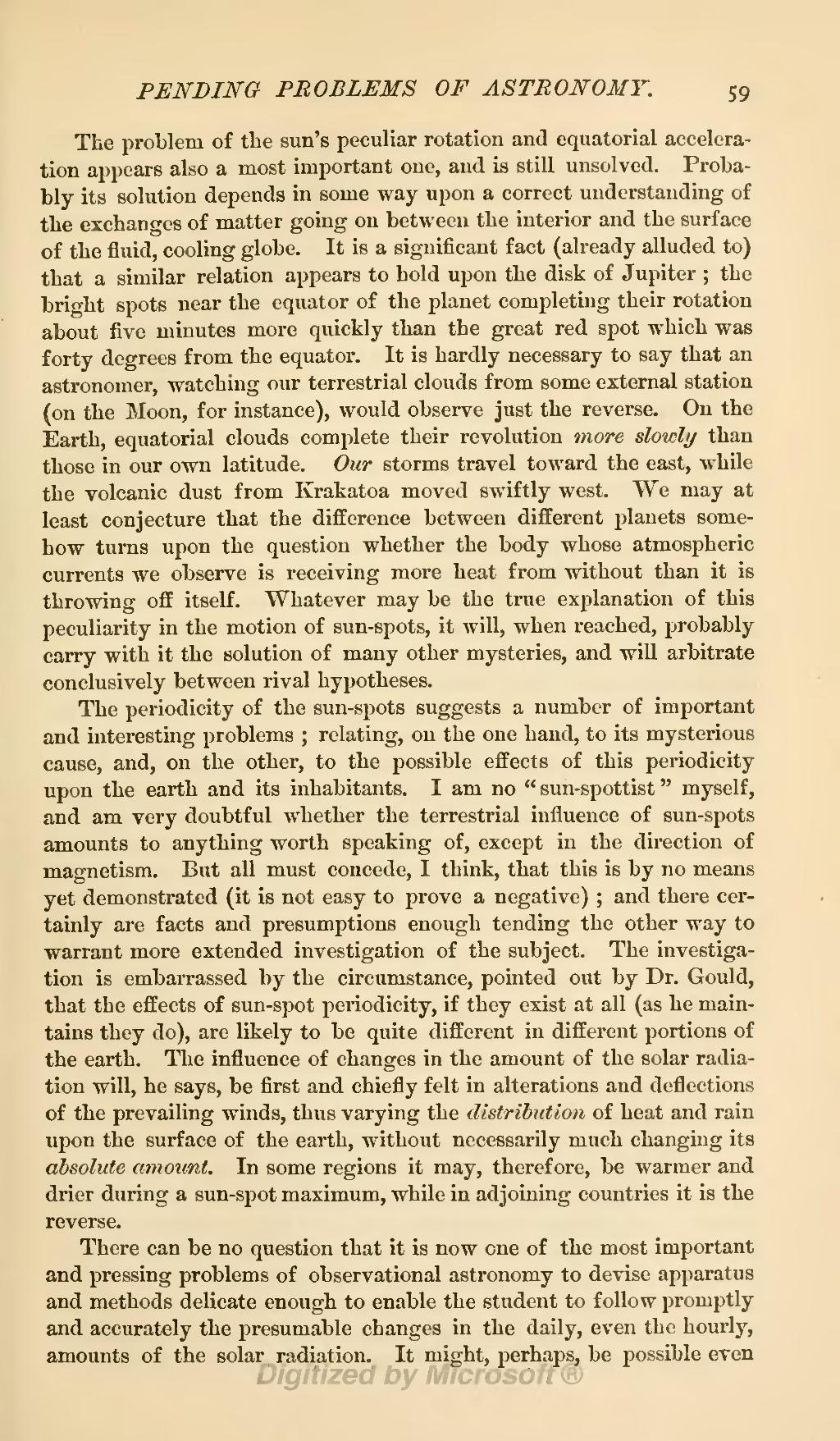The problem of the sun's peculiar rotation and equatorial acceleration appears also a most important one, and is still unsolved. Probably its solution depends in some way upon a correct understanding of the exchanges of matter going on between the interior and the surface of the fluid, cooling globe. It is a significant fact (already alluded to) that a similar relation appears to hold upon the disk of Jupiter; the bright spots near the equator of the planet completing their rotation about five minutes more quickly than the great red spot which was forty degrees from the equator. It is hardly necessary to say that an astronomer, watching our terrestrial clouds from some external station (on the Moon, for instance), would observe just the reverse. On the Earth, equatorial clouds complete their revolution more slowly than those in our own latitude. Our storms travel toward the east, while the volcanic dust from Krakatoa moved swiftly west. We may at least conjecture that the difference between different planets somehow turns upon the question whether the body whose atmospheric currents we observe is receiving more heat from without than it is throwing off itself. Whatever may be the true explanation of this peculiarity in the motion of sun-spots, it will, when reached, probably carry with it the solution of many other mysteries, and will arbitrate conclusively between rival hypotheses.
The periodicity of the sun-spots suggests a number of important and interesting problems; relating, on the one hand, to its mysterious cause, and, on the other, to the possible effects of this periodicity upon the earth and its inhabitants. I am no "sun-spottist" myself, and am very doubtful whether the terrestrial influence of sun-spots amounts to anything worth speaking of, except in the direction of magnetism. But all must concede, I think, that this is by no means yet demonstrated (it is not easy to prove a negative); and there certainly are facts and presumptions enough tending the other way to warrant more extended investigation of the subject. The investigation is embarrassed by the circumstance, pointed out by Dr. Gould, that the effects of sun-spot periodicity, if they exist at all (as he maintains they do), are likely to be quite different in different portions of the earth. The influence of changes in the amount of the solar radiation will, he says, be first and chiefly felt in alterations and deflections of the prevailing winds, thus varying the distribution of heat and rain upon the surface of the earth, without necessarily much changing its absolute amount. In some regions it may, therefore, be warmer and drier during a sun-spot maximum, while in adjoining countries it is the reverse.
There can be no question that it is now one of the most important and pressing problems of observational astronomy to devise apparatus and methods delicate enough to enable the student to follow promptly and accurately the presumable changes in the daily, even the hourly, amounts of the solar radiation. It might, perhaps, be possible even
